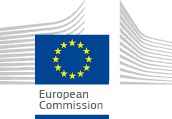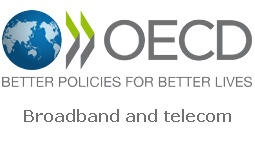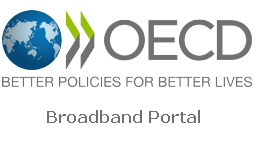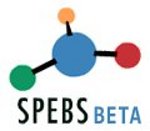We suggest
Proposed articles | Actions-Initiatives for developing Broadband | International experience from broadband networks infrastructure development plans | Relevant INTERREG Projects | Investment Strategies | Financial Issues with next generation networks
Relevant INTERREG Projects
INTERREG IV
- B3 Regions. Regions for Better Broadband connection.
B3 Regions aims to improve the effectiveness of regional development policies in the Information Society area, by optimizing the expert partners' good practices (mainly achieved through Structural Funds Plans 2000-2006) that are related to broadband implementation in disadvantaged areas.
- eCitizen II. Towards citizen-centred eGovernment in European.
eCitizen II is designed to support European cities and regions in their joint efforts to accelerate eGovernment through exploiting established networks, gained experiences and good practices to improve interaction between citizens and public authorities, better involving citizens in local decision-making and contributing to change in operational culture and attitudes within public administrations. - ENGAGE. Enhancing 'Next Generation Access' Growth in Europe.
ENGAGE aims to help rural regions across Europe to better understand and address the issue of "How to build a high speed broadband (HSB) network at efficient cost in rural areas" in order to make sure that the requisite are fulfilled for the maintenance or even strengthening of local populations and economic activities.
SEE (South-East Europe)
- PPP4Broadband.
Tackling the "Broadband Gap" in SEE Rural areas through PPP model.
The general objective of PPP4Broadband project is the improvement of the development of virtual accessibility through broadband development in SEE rural areas using PPP model. Project aim is to develop transnational tools, methodologies and guidelines targeting mainly public actors across SEE as PPP procurers.
- SECOVIA. South East Europe jointly developed common advanced virtual accessibility solutions to support public services.
SECOVIA promotes jointly developed, advanced IT solutions that harvest the benefits of cloud computing to support access to shared public IT services, resources & infrastructures and tackle the digital divide among SEE territories. - SEE Digi.TV. South-East European Digital Television.
SEE Digi.TV will directly speed-up the digitalization of the broadcasting services, and will trace the path for a wider deployment of ICT broadband services. The inclusion of stakeholders, especially broadcasters and industry, is essential and will have positive influence on business development. The overall objective of the SEE Digi.TV is harmonization of the activities in the target SEE region related to the introduction of Digital Broadcasting services. - SEE TV-WEB.
Tackling the 'Digital Divide' in SEE by using the capacity of DTT networks.
SEE TVWEB plans to execute activities which will foster accessibility and availability of AVMS (Audio-Video and Media Services) on-demand and Information Society services offering at least minimal internet experience to the vulnerable groups such as elderly, persons with disabilities, economically weak and all those who have a limited access to internet services due to lack of access (rural) or limited computer/internet literacy. - SIVA.
South East Europe improved virtual accessibility through joint initiatives facilitating the rollout of broadband networks
SIVA aims to contribute to the improvement of the accessibility of SEE territories through broadband services, as substitute for and supplementing physical accessibility and thus to the narrowing the digital gap in South East Europe. The activities planned include among others, the identification, assessment and analysis of the needs related to virtual accessibility, the promotion of the exchange of experiences, the development, testing and assessment of a transnational mechanism on the quality of virtual accessibility, the promotion of the adoption of a common technical approach facilitated by geo-spatial analysis tools, the facilitation of reducing the network deployment costs through common policy approaches on mapping existing infrastructures and increasing their availability to other/new operators and the analysis and exchange of good practices and investment strategies.
ADRIATIC
- PITAGORA. Platform for the Information Technology aimed at Getting Opportunities
to reduce ICT gap in the Adriatic area.
PITAGORA project was born in the effort of answering to the need of the Adriatic area, accelerating ICT penetration, raising awareness among Public Authorities and SMEs about the advantages of ICT services. Starting with the model-making of some good practices, such as Plonegov, PEOPLE platforms (re-use of e-governmental solutions) and WI-FE infrastructure, PITAGORA aims at adapting it to the partners' frameworks thus transferring it. Moreover the cross border activities will enable the uptake of an Adriatic ICT platform, resulting from the agreed and tested services/methodologies














